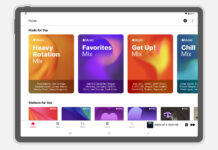Vivo has been doing a good job with software releases lately. In fact, last year, the company released the Android 15 update much earlier than other brands, even before Google released it for its Pixel devices. This was unexpected. Vivo users can expect a faster update release this year as well, and the good news is that the brand is already working on it.
The Android 16 update for Vivo phones will be accompanied by the Funtouch OS 16 shell, which is likely to bring a host of new features and improvements. The update will soon begin rolling out to Vivo phones. Unfortunately, for some devices, Android 16 will be the final version. In other words, these Vivo phones will run Android 16 until the end of their service life.
We have compiled a list of Vivo phones that will receive Android 16 (with Funtouch OS 16) as their last major update. Review the list to determine if your phone will need to be updated next year.
Vivo phones will receive Android 16 as the last major update
Vivo has not officially confirmed this list. Therefore, it is based on current update policies and some assumptions.
Vivo X90, X90 Pro, X90 Pro+, X90s
Vivo V40, V40e, V40 Pro, V40 Lite, V40 SE
Vivo V30, V30e, V30 Pro, V30 SE, V30 Lite 4G
Vivo T3, T3 Pro, T3 Ultra, T3 Lite, T3x
Vivo Y300, Y300 Plus, Y300 Pro
Vivo Y200 4G, Y200e, Y200 Pro, Y200+, Y200 GT, Y200i, Y200t
Vivo Y100 4G
Vivo Y39
Vivo Y29 4G, Y29s
Vivo Y19
iQOO 11, 11 Pro
iQOO 11 Pro
iQOO Z9, Z9x, Z9 Lite, Z9s, Z9s Pro
Although this list is mostly accurate, I still recommend checking it against official announcements next year for final confirmation.
If your device is on the list, don’t expect any major updates after Android 16. However, the device will continue to receive security updates for some time. To continue receiving new features and the latest improvements, you may need to upgrade to a new model next year.
What is Vivo’s software update policy?
Although the brand releases software updates fairly consistently, its update policy is somewhat chaotic. Vivo phones do not have a transparent software update policy, especially for mid-range and cheaper models. This means that there is no certainty about future OS updates.
However, premium models receive a nice bonus — faster updates and extended software support. Take the X200 series, for example: it promises four OS updates. Previously, flagship devices were limited to three OS updates. Several iQOO models, such as the iQOO 13 and iQOO 12 series, have also been promised the same extended software support.
The Vivo V50 series also received an additional OS update, which was previously limited to only two. Meanwhile, Vivo T and Y series phones usually only receive two. The iQOO Z series follows the same trend, but the latest Neo models now receive up to three major updates.
Although Vivo is gradually improving its update policy, it still lags behind industry leaders such as Google and Samsung. Both of these companies now offer up to seven years of updates for premium models. More importantly, they have a transparent update policy for each phone.
On the positive side, Vivo is a reliable brand when it comes to software updates and has recently started offering extended software support for various models. However, there is still much room for improvement, especially in terms of transparency and consistency for lower-end models. We hope that over time, the situation will continue to improve across all price segments.









